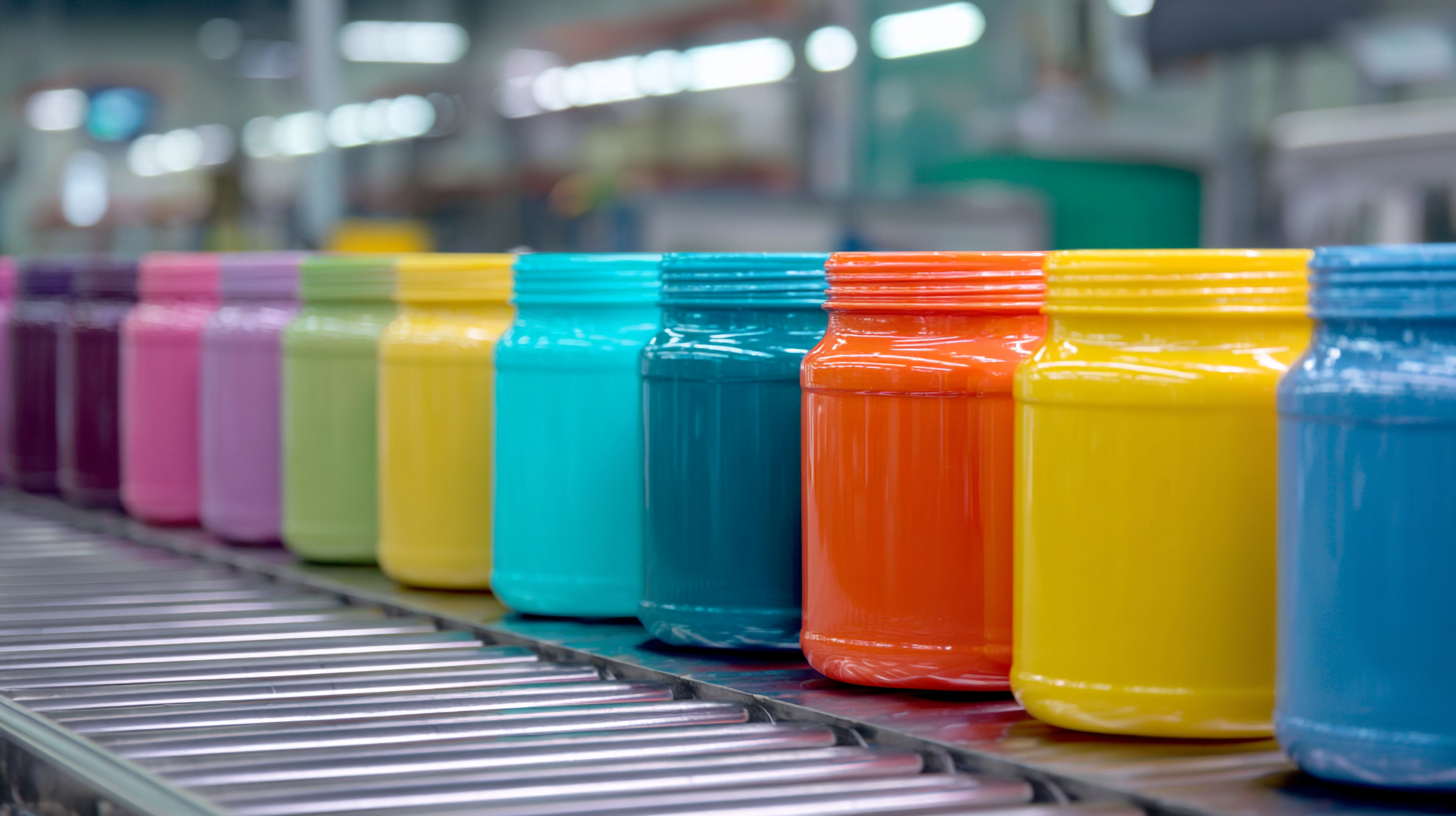In today's increasingly competitive global market, mastering the art of Plastic Jar Packaging has become a critical focus for product supply chain stakeholders. As consumers demand more sustainable and visually appealing packaging solutions, businesses must innovate and refine their packaging strategies to attract and retain customers. This blog delves into the nuanced techniques that can elevate Plastic Jar Packaging, ensuring that it not only meets functional requirements but also resonates with buyers' preferences on a global scale. From selecting the right materials to leveraging cutting-edge technology in design and production, we will explore a variety of top strategies that can streamline operations and enhance brand appeal. Join us as we uncover the best practices and insights that will empower suppliers to excel in the complex landscape of packaging, ultimately leading to increased market reach and customer satisfaction.

In the ever-evolving global market, plastic jar packaging has emerged as a pivotal component in the product supply chain. Businesses must recognize that packaging is not just a functional necessity but also a critical aspect of product presentation and consumer appeal. The significance of plastic jar packaging lies in its versatility and ability to preserve the quality of various goods, from food and beverages to cosmetics and pharmaceuticals. As buyers increasingly prefer products that are visually engaging and securely packaged, investing in high-quality plastic jars can significantly enhance brand identity and customer loyalty.
Furthermore, sustainability is becoming an essential factor in packaging decisions. Global buyers are more inclined to select products packaged in eco-friendly materials, which is driving manufacturers to innovate and adopt sustainable practices. Using recycled materials or developing biodegradable plastic jars can not only reduce environmental impact but also meet the increasing demand for green products. As companies navigate the complexities of the global market, understanding the importance of effective and responsible plastic jar packaging can position them favorably against competitors and align their offerings with consumer expectations.
When selecting plastic jar designs for global supply chains, there are five key features to consider, ensuring both functionality and aesthetic appeal. First, look for jars with airtight seals. This feature helps in preserving the freshness of the contents, making the product more appealing to consumers. A reliable seal also reduces the risk of leaks during transportation, which can save costs and maintain product integrity.
Next, consider the jar's transparency. Clear jars allow customers to see the product inside, enhancing shelf appeal and encouraging purchase decisions. Transparency can also serve a practical purpose, making it easier for retailers to monitor inventory levels. Additionally, opting for lightweight materials can significantly reduce shipping costs without compromising the durability of the packaging.
Lastly, functionality in design is crucial. Features such as easy-to-open lids and stackable shapes can greatly enhance user experience. Innovative designs that consider both the end-user and the supply chain will stand out in a competitive market. By prioritizing these key features, buyers can ensure their plastic jars not only meet logistical needs but also attract consumers.

When it comes to plastic jar packaging, several challenges can hinder efficiency and effectiveness in the product supply chain. One common issue is ensuring the integrity of the jar during transportation. Poorly designed packaging can lead to breakage or leaks, affecting product quality. To overcome this, it’s essential to invest in robust materials and innovative design solutions that provide optimal protection while being lightweight.
Another challenge is maintaining the product's shelf life. Many plastic jars lack proper sealing mechanisms, which can expose contents to air and moisture. Implementing advanced sealing techniques and using barrier materials can help mitigate this problem. Additionally, educating supply chain partners about the importance of handling practices can further safeguard product integrity. Addressing these challenges not only enhances the reliability of plastic jar packaging but also improves customer satisfaction and trust in the brand.
Efficient plastic jar packaging is essential for suppliers aiming to meet the demands of global buyers. One innovative technique is the use of automation in the packaging process. Implementing automated systems can significantly reduce labor time and minimize the risk of human error, allowing for faster production rates and greater consistency across all jar types. This not only enhances efficiency but also ensures that products maintain high quality throughout the supply chain.
Another effective method is adopting eco-friendly materials and designs. By incorporating biodegradable or recyclable plastics, businesses can appeal to environmentally conscious consumers while maintaining durability and functionality. This shift not only helps reduce environmental impact but also aligns brands with the growing trend of sustainability, which is increasingly valued by global buyers.
Finally, leveraging smart packaging technology can further enhance packaging efficiency. Utilizing sensors and QR codes can provide real-time data on product conditions during transportation and storage. This capability allows suppliers to optimize logistics and deliver products in perfect condition, ensuring customer satisfaction and reducing waste. By integrating these innovative techniques, businesses can not only elevate their packaging strategy but also strengthen their position in the competitive global market.
As consumer awareness grows, sustainability has become a focal point in the plastic jar packaging industry. Recent surveys indicate that 90% of U.S. consumers are more inclined to purchase from brands that emphasize sustainable packaging. This trend is particularly significant in sectors such as floriculture, where reliance on single-use plastics poses environmental challenges. By adopting eco-friendly packaging solutions, companies can mitigate their carbon footprint and align with consumer values.
Tips: Consider utilizing compostable or recyclable materials in your packaging designs. Transitioning to sustainable alternatives can not only enhance your brand image but also reduce waste. For instance, innovative designs such as refillable jars can contribute to a circular economy, minimizing plastic pollution.
Moreover, sustainable practices are gaining traction within the beauty product sector, with nearly three-quarters of consumers stating that they prioritize brands committed to eco-friendly packaging. This shift underscores the necessity for businesses to integrate sustainability into their supply chain strategies. Leveraging blockchain technology for traceability and implementing waste management practices can position brands favorably in the market, catering to the growing demand for environmentally responsible products.
Tips: Investing in sustainable supply chain strategies can be a game changer. Evaluate partnerships with suppliers who prioritize eco-friendly materials and explore refurbishment programs to extend product life cycles, ultimately enriching your brand’s sustainability profile.

